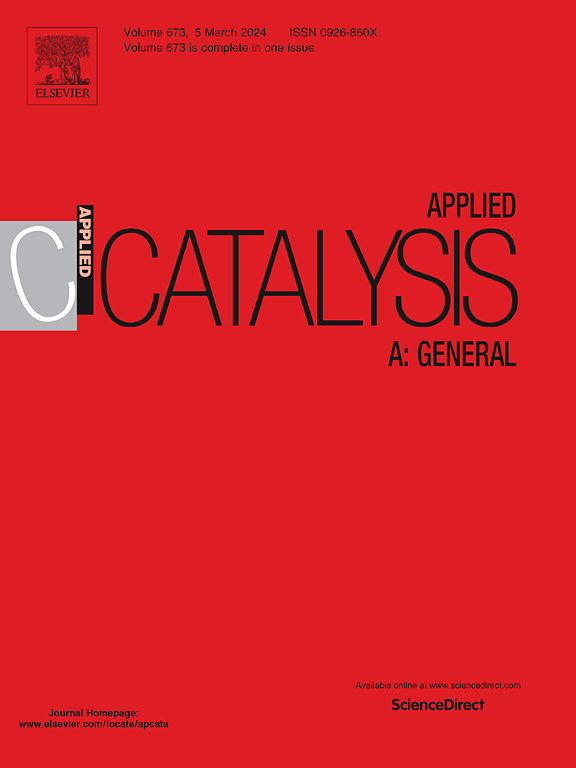Fabrication of FeCoNi LDH medium entropy hydroxide nanosheet for catalyzing oxygen evolution reaction
IF 4.8
2区 化学
Q2 CHEMISTRY, PHYSICAL
引用次数: 0
Abstract
Medium entropy material-based catalysts have garnered increasing attention in water electrolysis due to their high electrocatalytic activity and excellent stability, which are attributed to lattice distortion and hysteretic diffusion effects. In this study, we successfully fabricated 3D nanoflower-like array of FeCoNi layered double medium entropy hydroxide (ME-LDH) nanosheets for the oxygen evolution reaction (OER) through a one-step hydrothermal synthesis method. Subsequently, the FeCoNi LDH was activated via NaClO oxidation treatment, thereby modulating the valence states of the metallic elements. The performance of the activated FeCoNi LDH (A-FeCoNi LDH) was further optimized by precisely adjusting the hydrothermal temperature and metal ion concentration. Benefiting from its unique nanostructure, lattice distortion, and multiple active sites, the A-FeCoNi LDH coated electrode demonstrates superior OER electrocatalytic performance, achieving a low overpotential of 228 mV and a low Tafel slope of 58.37 mV dec−1 to deliver a current density of 10 mA cm−2, along with remarkable long-term stability exceeding 80 h. This work provides an innovative strategy for developing efficient medium entropy electrocatalysts, showcasing significant potential for practical industrial applications.
催化析氧反应的FeCoNi LDH介质熵氢氧化物纳米片的制备
介质熵材料基催化剂由于晶格畸变和滞后扩散效应而具有较高的电催化活性和优异的稳定性,在水电解领域受到越来越多的关注。在这项研究中,我们成功地通过一步水热合成方法制备了三维纳米花状FeCoNi层状双介质熵氢氧化物(ME-LDH)纳米片阵列,用于析氧反应(OER)。随后,通过NaClO氧化处理激活FeCoNi LDH,从而调节金属元素的价态。通过精确调节水热温度和金属离子浓度,进一步优化了活化的FeCoNi LDH (A-FeCoNi LDH)的性能。得益于其独特的纳米结构、晶格畸变和多个活性位点,a - feconi LDH涂层电极表现出卓越的OER电催化性能,实现了228 mV的低过电位和58.37 mV dec−1的低塔菲尔斜率,提供了10 mA cm−2的电流密度,以及超过80 h的显着长期稳定性。这项工作为开发高效的介质熵电催化剂提供了一种创新策略,展示了实际工业应用的巨大潜力。
本文章由计算机程序翻译,如有差异,请以英文原文为准。
求助全文
约1分钟内获得全文
求助全文
来源期刊

Applied Catalysis A: General
化学-环境科学
CiteScore
9.00
自引率
5.50%
发文量
415
审稿时长
24 days
期刊介绍:
Applied Catalysis A: General publishes original papers on all aspects of catalysis of basic and practical interest to chemical scientists in both industrial and academic fields, with an emphasis onnew understanding of catalysts and catalytic reactions, new catalytic materials, new techniques, and new processes, especially those that have potential practical implications.
Papers that report results of a thorough study or optimization of systems or processes that are well understood, widely studied, or minor variations of known ones are discouraged. Authors should include statements in a separate section "Justification for Publication" of how the manuscript fits the scope of the journal in the cover letter to the editors. Submissions without such justification will be rejected without review.
 求助内容:
求助内容: 应助结果提醒方式:
应助结果提醒方式:


